Legends of the skies

Deutsches Museum
The Flugwerft in Schleißheim, near Munich, is home to 74 aircraft and is a truly unique experience – well worth a visit. Among them is the DG 300-17, a research plane from DLR which, due to its special status, was once considered 'untouchable'. This is a journey into the realm of an aviation legend.
This place really calls for silence – at least, that is the first impression upon entering the exhibition hall. Yet, even on a rainy Wednesday, the place is bustling with activity. Visitors meander between displays, some exploring alone, others in groups. They must tread lightly, as the rubber floor is quick to coax a squeak from the soles of their shoes. Even the slightest sounds echo throughout the hall, bouncing off aircraft fuselages and rotor blades before getting lost in the steel framework of the upper gallery. Amid the shadow of gliders suspended from the ceiling, visitors walk along glass display cases filled with historical artefacts, illustrative materials and engine parts that impress with their sheer size alone, continuing on through islands of exhibits that represent different aspects of aviation history. And then, almost unexpectedly, right beside the vertical take-off aircraft, is a legend.
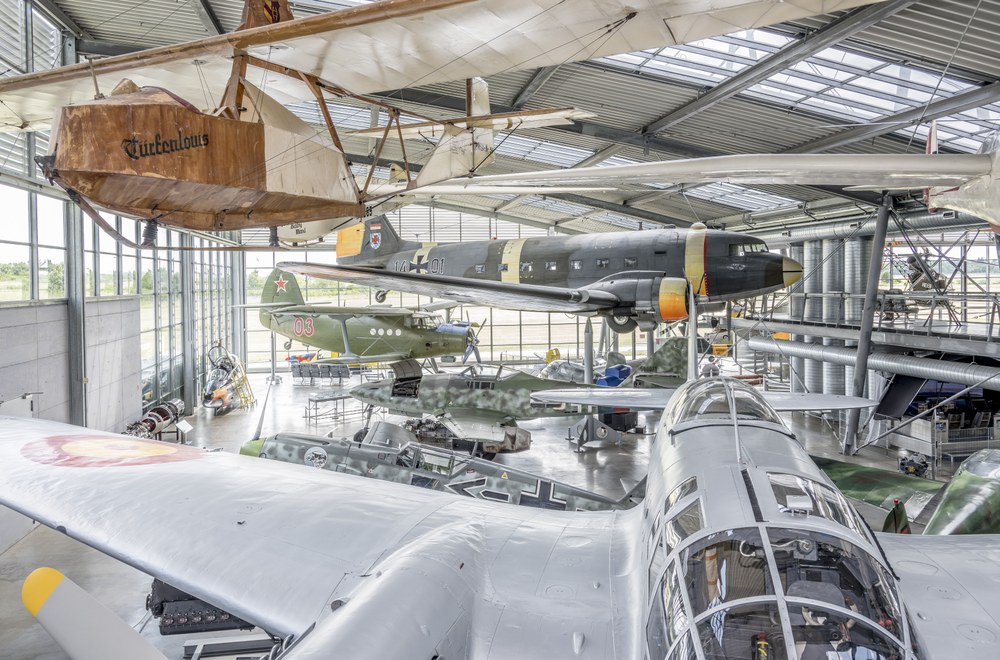
Deutsches Museum
An untouchable Icon
There it sits, immaculately white and gleaming. Silence befits it: no engine sputtering, no turbine noise having ever disturbed its flight. The official name for this elegant high-performance glider is DG 300-17. Its capsule-shaped cockpit and slender fuselage taper towards its tail, reminiscent of a dragonfly. Amidst the surrounding aviation giants, it measures just under seven metres from nose to tail, appearing incredibly delicate – almost fragile. But it would be a mistake to underestimate the DG 300-17. For 30 years, it served as part of the DLR Research fleet, flying countless missions as a reference aircraft used to measure the performance of other gliders. This long service earned it a unique nickname: 'the legend'. In order to be used as a precise benchmark for other aircraft, it had to remain unchanged for decades, and so the DG 300-17 was 'canonised' for its operational 'untouchability'.
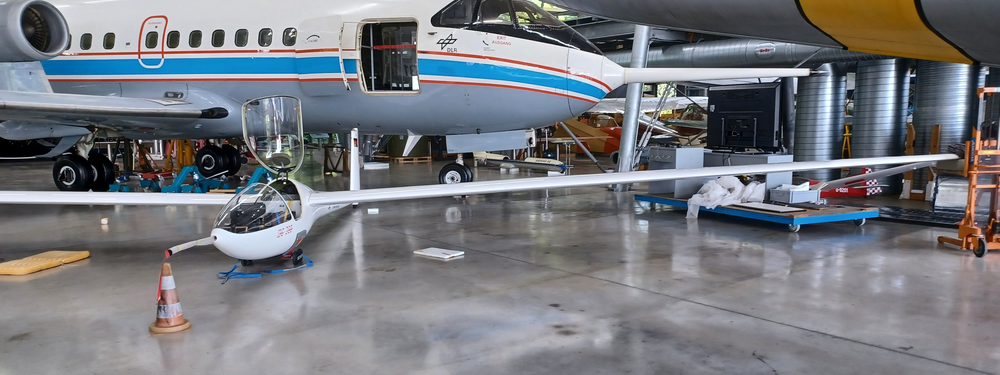
Deutsches Museum
It is no surprise that, upon the legend's retirement, it landed here – the new exhibition hall at Flugwerft Schleißheim. Located just a few metres away is the VFW-614 ATTAS (Advanced Technologies Testing Aircraft System), another decommissioned DLR research aircraft used to simulate the flight and landing behaviour of other aircraft employing sophisticated flight test equipment. The museum is also home to LFU 205, which served as an experimental aircraft for research into aerodynamics and construction methods for 50 years at DLR.
The Flugwerft Schleißheim hangar – home to 74 impressive aircraft
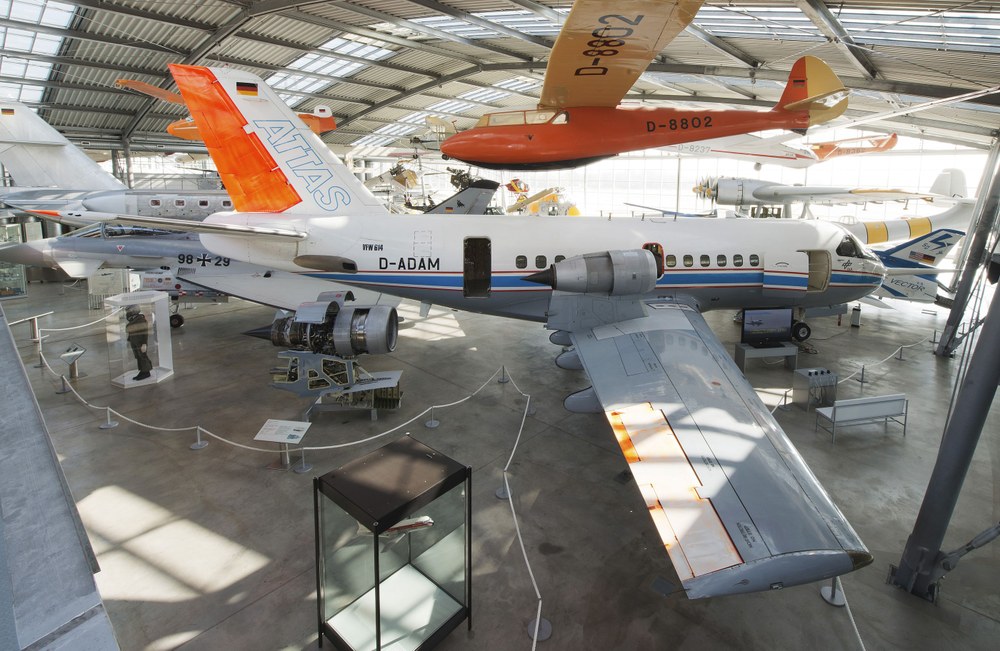
Deutsches Museum
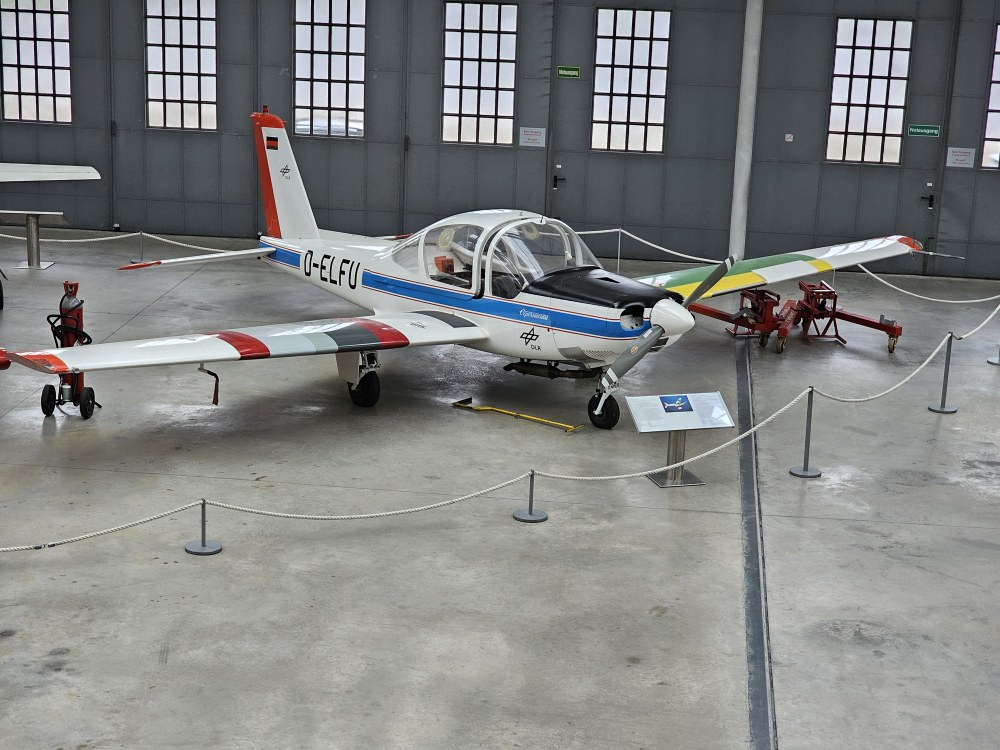
The DG 300-17 is just the latest addition to the 74 aircraft on display at Flugwerft Schleißheim, where dozens of accessories, engines and models are exhibited across 8000 square metres. The Flugwerft is not merely a stage for, but rather a significant part of German aviation history. Established in 1912 as the site of the newly founded Royal Bavarian Air Force, the airfield was later used for both military and civilian purposes. In 1981, military flight operations ceased entirely and the historic buildings were at risk of falling into disrepair. Restoration efforts, however, paved the way for the airfield's transformation into a museum, culminating in the opening of the Flugwerft Schleißheim in 1992 – the first branch of the Deutsches Museum. In addition to the new exhibition hall, the Museum extends across two other historic parts of the building: the commandant's office, built in 1912 and once the administrative centre of the old Schleißheim airfield, and the eponymous Werfthalle, constructed towards the end of the First World War to shelter and repair aircraft.
While machines rest, people are on the move
This is where the museum tour begins. Aircraft of various shapes and sizes, primarily from the first half of the 20th century, fill the hall from one end to the other. 'Blended wing' aircraft and propeller-driven aircraft hang from the vaulted, partially glass ceiling, which gives the otherwise functional building a certain lightness. It is a captivating experience to move among the exhibits, around them, beneath them. The machines are at rest; it is the people who move. In this way, each exhibit can be appreciated as an individual object, with distinctive features and its own history, some of which is closely connected to the Schleißheim site. A prime example of this is the Udet Flamingo, a two-seater biplane that made its mark on aviation history as a training and aerobatic aircraft, debuting at the Schleißheim airfield in 1925. Today, an airworthy replica of the Flamingo has its place in the far left corner of the hangar.
Changing object histories
At the front left of the hall's entrance, another highlight awaits: a Fokker D VII, built in 1918. With a top speed of nearly 200 kilometres per hour it was one of the most formidable fighter planes of the First World War. The camouflage pattern of the German Air Force adorns its fuselage and wings, giving it a sleek appearance – but its colour scheme hides a complex history. Despite the German design, the aircraft was originally a Dutch naval plane, only brought to Germany by the Nazis in 1940. After the Second World War, it was discovered in a shed in Bavaria and added to the collection of the Deutsches Museum. As it bore German markings when discovered, it was assumed to have a corresponding history, with no awareness of its Dutch origins. During restoration work in 1980, inconsistencies in the paintwork were noticed for the first time, but were not investigated further. It wasn't until 2020, through intensive research in collaboration with Dutch partners, that the true history of the aircraft was finally reconstructed as accurately as possible.
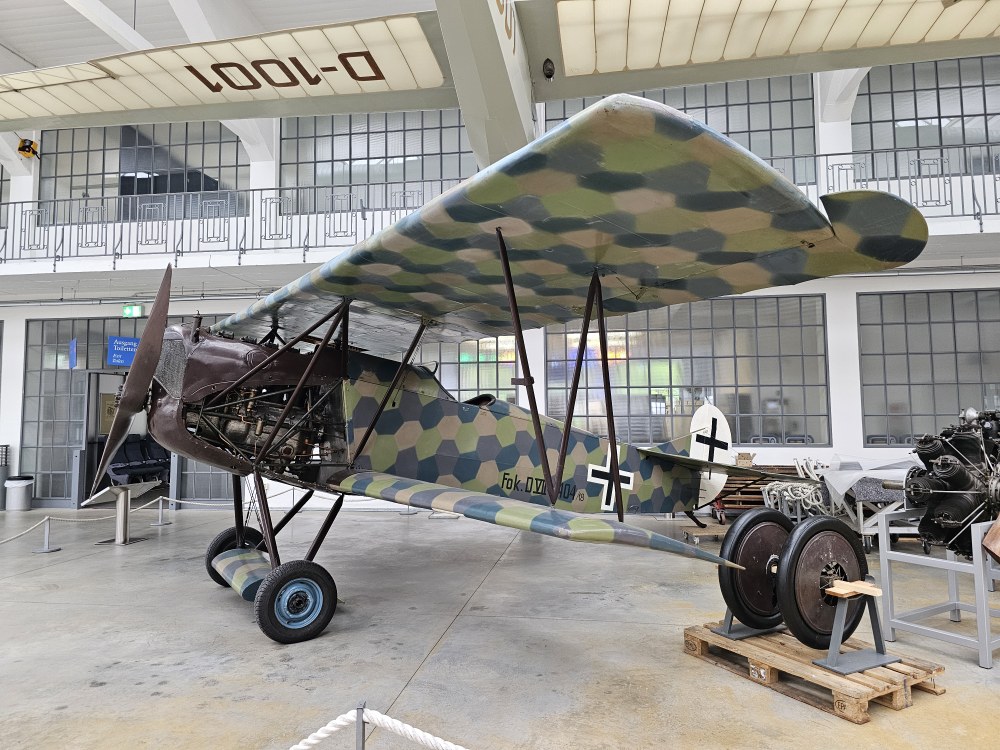
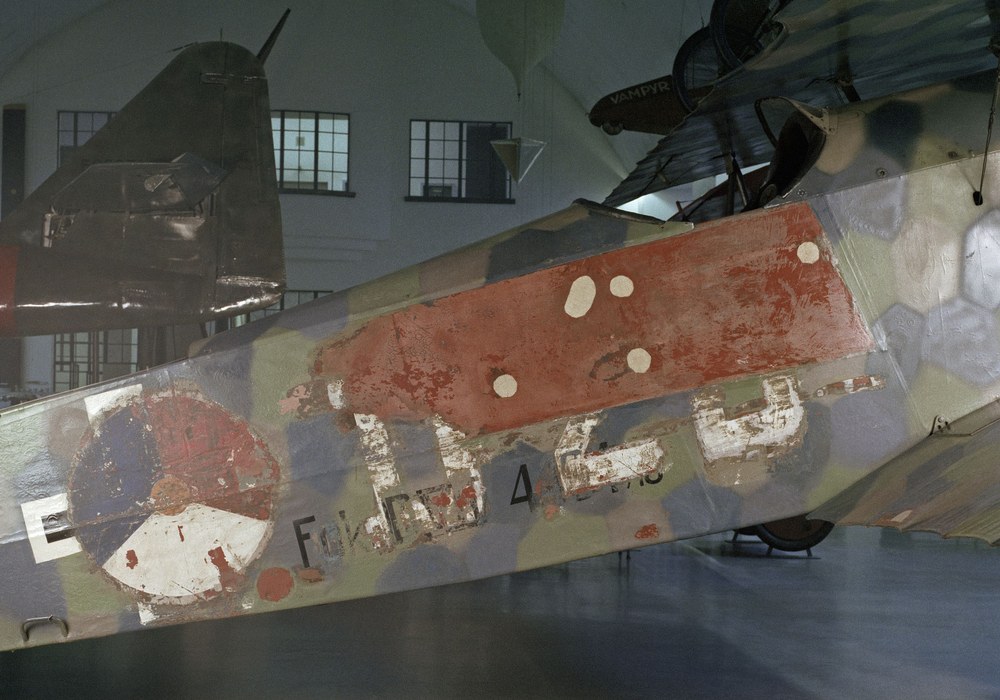
Deutsches Museum
Operation Lilienthal
From the former shipyard, visitors enter the commandant's office, the oldest section of the building which connects the historical and modern exhibition halls. The main focus here is on the early history of aviation. A particularly noteworthy project at Flugwerft Schleißheim is dedicated to the dawn of aviation: the restoration of an original Lilienthal glider, one of only four remaining in the world. The objective of 'Operation Lilienthal' is to gain deeper insights into the first mass-produced aircraft in human history and to prepare the striking glider for display in the exhibition. The restoration team is working under strict constraints, ensuring they alter the original material as little as possible.

In the past, aircraft were displayed in museums primarily as examples of technical masterpieces. Today, we view them as cultural artefacts, with their historical and social context given equal significance. The reassessment of Nazi crimes committed during the production of some of the aircraft on display is just as crucial as current discussions on the climate, mobility and the environment.
Do 31 E-3 – one aircraft, ten engines and 300 kilonewtons of thrust
The tour comes to an end where this report began: in the new exhibition hall, a space that beautifully captures the unique sense of space first felt in the original hangar. Here, visitors are surrounded by an array of aircraft in all shapes, types and sizes. From classic 1940s aircraft to sleek Cold War fighter jets, the collection is comprehensive. Helicopters, jet aircraft, gliders and vertical take-off planes – and even a flying boat – are all here. Further along the central aisle sits the ATTAS research aircraft, and just a few steps away the Dornier Do 31 E-3, the world's only transport aircraft equipped with jet engines capable of taking off and landing vertically. Lifting this 21-tonne giant vertically into the air requires a whopping ten engines, delivering a combined thrust of 300 kilonewtons. And then there's the revered DG 300-17 glider – like many of the exhibits, it looks ready to take to the skies once more at a moment's notice.
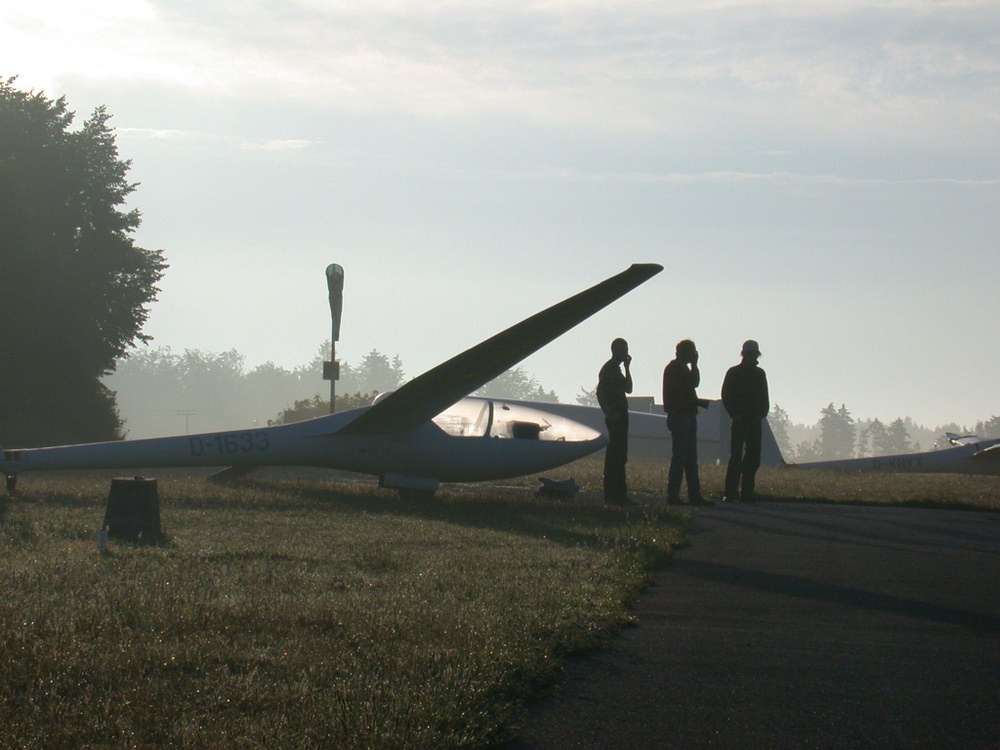
New exhibition area dedicated to aviation research
Decommissioned in 2015, the days of the legend are well over. But since its arrival in Schleißheim, life around it has been surprisingly dynamic. The renovation work to the museum's roof and ventilation system required the frequent relocation of exhibits and the temporary rearrangement or movement of exhibitions. Amidst these changes, the decision was made to introduce a new exhibition area specifically dedicated to aviation research. Flugwerft Schleißheim highlights both the remarkable achievements and the challenges faced in creating today's highly interconnected world of aviation. More than anything, though, it sparks curiosity about what the future holds – and that alone makes it worth a visit.
An article by Melanie Dorweiler from the DLRmagazine 176
